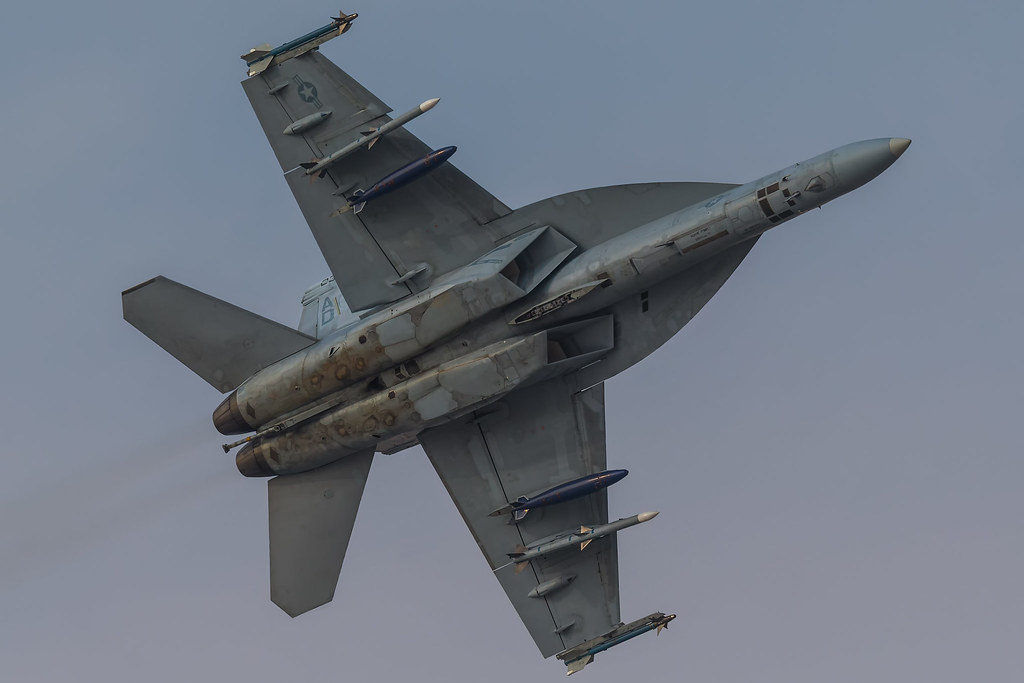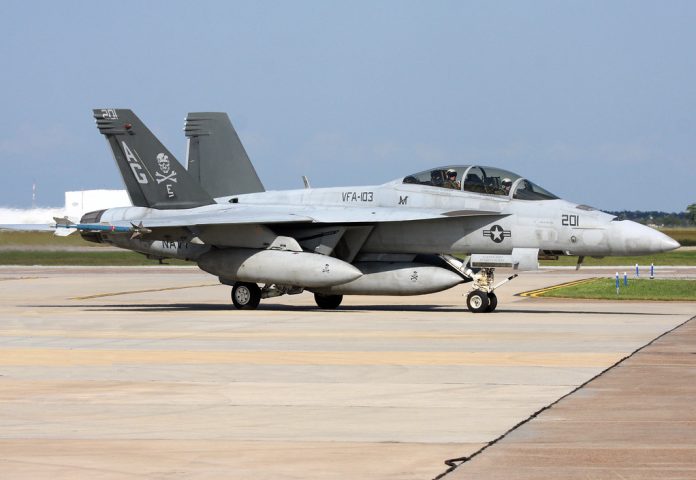
In a tribute to technological evolution and tactical superiority, the F/A-18 Hornet, a bastion of U.S. Naval air power, marks its 45th anniversary 2023.

From its conception to its extensive operational history, the Hornet family of fighters, including the Super Hornet and Growler, encapsulates a legacy of aerial dominance and innovation.

Originally manufactured by McDonnell Douglas and Northrop Grumman, the F/A-18 Hornet redefined naval aviation with its unparalleled versatility. It seamlessly transitioned between air-to-air and air-to-ground missions, a capability that was gloriously executed during Operation Desert Storm.

“It allowed pilots to move quickly and efficiently between the air-to-air combat mission and the air-to-ground mission; it’s the flip of a switch,” noted Cmdr. Tim Tuschinski, reflecting the efficiency that set the Hornet apart.

The Hornet’s adaptability stems from the Energy-Maneuverability (E-M) Theory, which prioritized fast turns and energy retention over sheer speed and altitude. This design philosophy ensured the Hornet’s prowess in aerial engagements.

The pioneering digital cockpit and hands-on throttle and stick further advanced the fighter’s operational capabilities, laying the groundwork for future iterations.

Though the “Legacy” Hornets have been retired from the Navy in spring 2023, the legacy continues with the Super Hornet variants.

The F/A-18E/F Super Hornet and the electronic-warfare-oriented EA-18G Growler have surpassed 11 million flight hours and are anticipated to be core elements of naval air power well into the 2040s.

“Our team continues to move fast and take risks to support, sustain, and advance the fleet,” affirmed Capt. Michael Burks, underscoring the commitment to evolving the fleet to meet the needs of tomorrow’s warfighters.

2027 will witness the cessation of the Boeing F/A-18 Super Hornet production, marking an end of an era that spanned nearly three decades. The last orders from the U.S. Navy culminate in the upgraded Block 3 Super Hornets, which boast enhanced technology for combat readiness.

According to Mark Sears, Boeing vice president, “there are no active discussions with the Navy about additional F-18s beyond these,” signaling the end of the production line but not the aircraft’s service.

In the face of emerging threats and advancing technology, the Super Hornets are being retrofitted to meet future demands. The Block 3 enhancements include the formidable APG-79 AESA radar, advanced networking capabilities, increased computing power, and a life extension program to ensure operational readiness for the long haul.

There is a service life extension program and radar signature reduction included in the upgrade of the majority of the current Super Hornet fleet to block 3. According to US Navy Rear Adm. Andrew Loiselle in an August 3, 2021 US Naval Institute blog post, the Super Hornet upgrades will be significant.

“The Super Hornet remains a predominant aircraft in the carrier air wing and will continue to provide significant combat capability into the 2040s,” a statement by Rear Adm. John Lemmon emphasized the longevity of these aircraft.

The Super Hornet keeps flying on, remaining smart, versatile, and at the forefront with its powerful wings, nine pylons, keen eyes, and two blazing afterburners.
Relevant articles:
– 45 Years Of The F/A-18 Hornet: A Look At The Family, Simple Flying
– A Look At The Last Of The US Navy’s F/A-18 Super Hornet Orders, Simple Flying
– 18 Hornet Celebrates 45 Years of Naval Superiority, The Southern Maryland Chronicle

